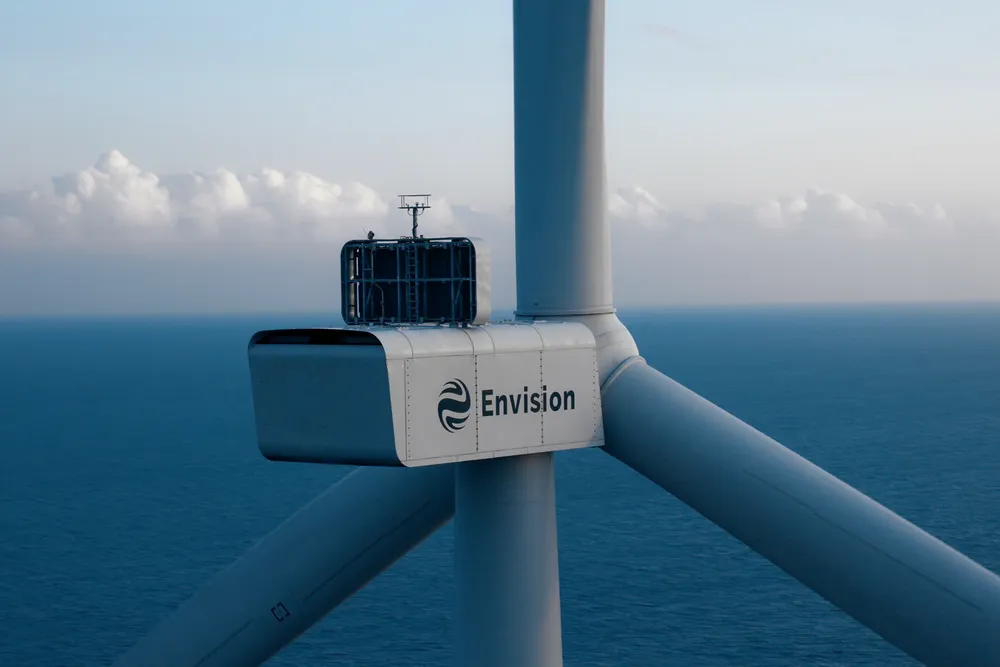Envision exec opens up on ambitions for European wind turbine factory
Chinese cleantech giant is pressing ahead with two new international turbine factories as it weighs up potential for localising production in Europe, says head of its wind power division

But its ambitions do not stop there. Envision has its eyes on the lucrative European market, where the prospect of new Chinese entrants challenging local players has proven a topic of fierce debate.
Envision needs to understand what the “expectation” of European customers would be for the turbine maker, said Lou.
This interest has only grown greater amid challenging economic conditions for the sector, which have strained the profit margins of developers and pushed them to look for cheaper suppliers.
However, if Envision becomes “more localised in Europe,” Lou said that he expects that the cost of its turbines will become higher than if they had been imported from China.
Lou said he is also conscious that the supply chain for raw materials and big turbine components is “quite well organised” in China. It will take time for Europe to “upgrade its production capability and capacity”.
“So it depends on the demand of the market,” said Lou. If it can accept the cost of turbines produced using localised European supply chains, “of course we can do it,” he said. “We are quite flexible.”
“We are planning. We are doing the investigation for the business study in Europe,” he said. “It is in our schedule.”
‘Different expectations’ in Europe
Lou said that Envision is currently working on the development of its latest Model Z offshore wind platform, which boasts an up to 18MW capacity.
“This platform we are developing also for the global market, especially for China, also for Europe,” he said.
Lou said Envision knows that offshore wind conditions in Europe are “different” to China, so the platform has been designed to suit wind conditions globally, “especially for European offshore.”
“We have developed the technology and product in order to fulfil such a demand from Europe's side.”
Generally speaking, he said that the considerations of developers in China and elsewhere are “different,” with those in China “always focusing on Capex.”
Internationally, Lou said that there is more focus on the “whole lifetime cost” of turbines and their Opex.
Expectations around the lifetime of turbines are different, he said. “For example, in Europe, sometimes we get requests for a lifetime of offshore for 30 to 35 years. In China, it's 20 to 25 years.”
Developing turbines with such different lifetime expectations requires a different “development principle” for each, he said. “It is very different between the Chinese market and other markets.”
“We have different design principles for the product for China and other regional markets,” he said. “This is very important.”
Global push gathers pace in other markets
Several Chinese wind giants have announced plans for and even opened international factories in the last year as they continue to expand their horizons.
But only Envision can claim to have concrete plans to open up in two new markets, Saudi Arabia and Kazakhstan, along with its already well-established Indian facilities.
Lou said that Envision aims to open that facility in 2026. The factory will open up in two phases and will focus on producing onshore wind turbines.
Expansion will also however depend on opportunities to export turbines to “other regions,” said Lou.
One of those “other regions,” could be Europe. Asked whether the Saudi factory could export to the continent, Lou said: “Of course, as mentioned that if European Union accepts the imported wind turbine from Saudi or others, of course we can do it because our industrial footprint is globalised.”
Envision has already finished preparing the design of that factory and, like the Saudi plant, Lou said it is expected to come online next year and produce onshore wind turbines.
(Copyright)